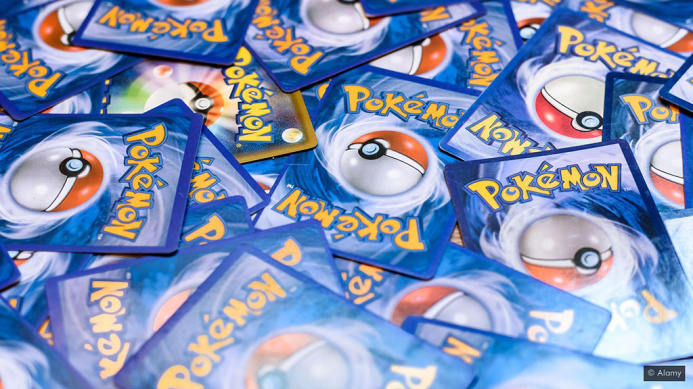Pocket Monsters: the Japanese game which has become viral
24.08.2020 | 00:19 |The Japanese game became a consequence and reflexion of how the whole generation has ceased to play in the open air. Virtual life has got a new value because of the closed borders and requirements physical distancing. COVID-19, certainly, has accelerated digitization of lives in society, but has not created it. Seeds of this phenomenon have sprouted for the first time decades earlier when there was one virus boom which has extended through toy shops and TVs, instead of through microbes: fashion on Pocket Monsters in the late nineties.
The portfolio of the original name - Pocket Monsters - Pokémon was not only video game, but also the collection of trading cards, and an anime-serial. Let out in Japan in 1996 on Nintendo Game Boy, Pokémon debuted in the USA in August, 1998. On the turn of the 21st century boundary any corner of the world was not been insured from the phenomenon which subsequently began to name «Pokemania».

In total in a year 55000 impatient boys and girls besieged shopping centre of Minneapolis which was been chosen as start of summer training round of Pocket Monsters , financed Nintendo. At the end of 1999 Nintendo declared that game earned about 5 billion dollars that at that time was the size of all industry of video games of the USA.
How all began. By the beginning of the 1990-ties Nintendo earned more money, than all five best studios of Hollywood together taken, thus more interrogated children were learnt by Mario, than Mickey Mouse.
The qualitative drawing and sound of arcade qualities, raised surpassing possibilities of the predecessors developed in America and Great Britain, allowed a new generation of Japanese games-designers to transfer the unique abilities to children of the whole world by means of hit games, such as Metroid, Castlevania, and Super Mario Brothers. But this triumph would turn pale in comparison with triumph Pocket Monsters.

What was such in this menagerie of pocket monsters which so bewitches children worldwide? It was a child of the young man who at teenage age plunged into video games. Satoshi Tajiri was only 24 years when he thought up this concept in 1990, in a year after innovative portable system Game Boy from Nintendo went on sale. But game working out was stretched approximately for six years - the whole eternity for the game industry.
The action of Pokémon Red Version and Blue Version is developed in the invented countryside occupied by wild monsters. Players should investigate fields, the rivers and woods of the fantastic world in search of monsters - for domestication and training. The game part was devoted to battles, but same or even the most part was concentrated to gathering of imagined creatures in a virtual menagerie.
A key to success was that neither red, nor dark blue versions of game did not contain a totality of all of 151 beings. A unique way to fill up a collection - to create a network in both senses of this word: to find the friend with other version and to connect the Game Boys by means of a special cable. Thus, two players could battle with Pocket Monsters each other or, what not less often, easy to exchange them among themselves.

«I have imagined how an insect moves forward and back on a cable, - explained Tajiri to the magazine Time in the release of 1999 completely devoted to a phenomenon of Pocket Monsters. This is what has inspired me». This function allowed millions to feel for the first time more joint virtual experience, inducing players to go out of doors and find friends, instead of to play loneliness.
Actually it was so "other" game that anybody in Nintendo did not know that with it to do. First it seemed that there was no special push to its export. Shigeru Miyamoto, founder of Mario and adviser Tajiri during his work, explained in the interview that he was told that «such things never will be pleasant to the American audience». The problem, according to management of Nintendo, consisted that characters of Pocket Monsters are too lovely. Roundish, pocket monsters embracing by sight did not resemble furious goblins usual phantasy quest.

The authors! Tajiri was born in 1965, in 20 years after defeat of Japan in the Second World War. The world, in which he has grown, resembled the world of his grandmothers and grandfathers a little. Before the war Japan was mainly an agrarian state. By 1968 the country became the second-large economy of the planet. Young cities grew, suburbs crept away, and superhighways and lines of superfast trains connected with the countryside, quickly absorbing natural resources.
«I have grown in Machide who was in Tokyo, but it has thus kept a lot of nature, - remembered Tajiri in the interview in 2000 the childhood which he spent, and catching tadpoles and crawfishes. - But when I studied at an incomplete high school, the fishing dock before my station disappeared, and on its place there was a game arcade. Then I started to play Space Invaders and Galaxy Wars».
Having plunged into the virtual battles developed on the screen in arcade games, Tajiri became that Japanese named otaqu - the fan so afflicted that their hobbies force out practically all the rest in their life.

At that time many children even more often remained to play a premise, and not at own choice that is why that typical children's playgrounds - woods, streams, even simple sandboxes - disappeared during uncontrollable boom of urbanization and building growth.
This was what Tajiri knew by personal experience. That is characteristic, the subject line of games about Pocket Monsters which begun a serial, begun that the character-player plunged into traditional video game which play on the TV, and then left it and gone out of doors, in spite of the fact that mum remained "pasted" to the TV. The message was obvious. The previous generation which so changed a landscape, hardly will help. It was the world, in which young men needed to find new tools and allies to make the way in life.
The following level. After tens sequels and branches the fashion on Pocket Monsters definitively disappeared in 2000. Then there was a present revolution: Pokémon Go, developed by affiliated company Google Niantic Labs and let out in 2016. It was the appendix with the added reality which transformed smart phones into the present detectors of Pocket Monsters, using data GPS for imposing of monsters on viewing in real time of an environment of the user.

The combination of technologies of the Silicon Valley and Japanese characters appeared for players absolutely irresistible. In circulation were about 300 million copies of software Pokémon, and Pokemon Go for today was loaded more than billion times!
Pokémon Go finished the original concept of Tajiri to a logic limit, having changed game which again transferred children from premises to street. Partially the tremendous success of the appendix was caused by that it was perfectly thought over, with intuitively clear interface well approaching for subject domain. But it also was connected with change of way of leisure by society.
For the decades which passed from the moment of occurrence Game Boy, video games have turned from runaway or derivation - to a way of life, at times even in the new person. Pokémon Go has returned players to the real world, even when they remained online connected to social networks. And as children who have grown by games, turned into the adults, continuing to play, an everyday occurrence began to see the whole families hunting on Dragonites, Snorlax and Alakazams in vicinities of the houses and residential areas. Popularity of game with the added reality has extended worldwide with speed of forest fire. In July, 2020 Niantic Labs declared that will offer 10 million dollars of profit on online action Pokémon Go Fest in this summer on support Black Lives Matter - international movement of the active workers opposing violence concerning Negroes.

… In Tokyo it is often possible to see groups of townspeople which silently gather to catch any rare Pocket Monster, appeared in local street or in park, and then as silently to disperse. Average much of them and even advanced age - the game demography changes, and the game industry continues to extend more and more promptly in the world.











